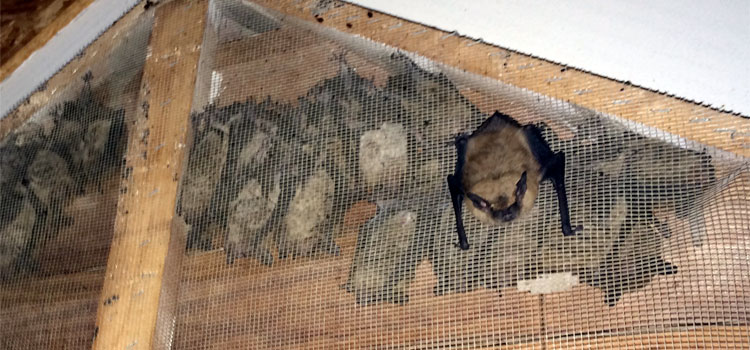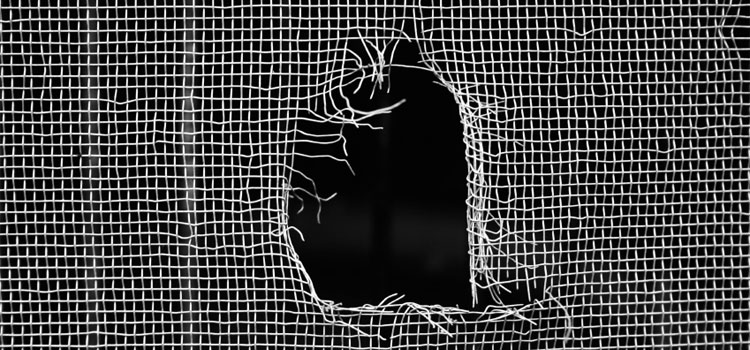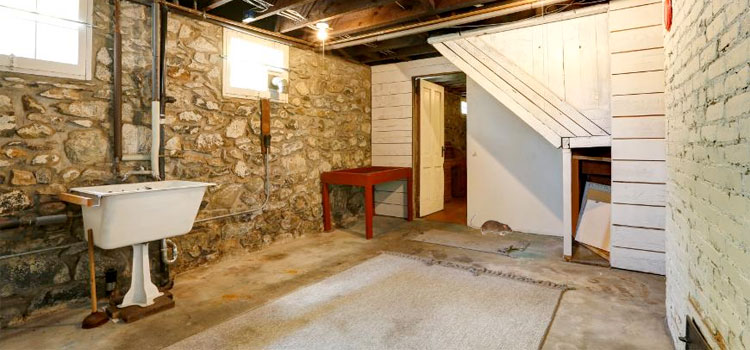While pests of various types are known to invade your house throughout the year, the problem tends to be at its most severe in the autumn. As we destroy more and more of the environment, critters begin to come into our homes and demand shelter.
We then find ourselves struggling to get rid of these freeloading pests. It’s not much different from when we demand disaster relief from the government after a hurricane or other major event.
This analogy has far too many similarities, so let’s just say the key difference is that the government understands us when we make our demand, but we don’t necessarily understand squirrel or Catanese when those critters are requesting shelter.
Because of this, other species will invade our homes and end up causing damage (usually unintentionally). The best route is to lock critters out before you have to worry about evicting them.
See Also: How to Keep Mice Out of Your Home
Entry Points: The Basics
On a day-to-day basis, the only entry points you have to worry about are your doors and windows. These basic barricades can keep potential pests out – especially during the holidays.
But there’s a lot more to entry points, especially when dealing with smaller critters. Let’s take a moment and examine some common ones.
What are Entry Points, Exactly?
Depending upon the size of your critter, there are quite a few methods to get into your home. An entry point can be considered anything from a small crack to a gaping window that critters can get through.
Older homes tend to have dozens of entry points, whereas a new home may only have a couple if the workmanship is shoddy.
In a few cases, critters will hitch a lift. This is especially true when you find bedbugs in your home. To a lesser extent, your extended critter family can be the reason you suddenly find adult fleas in your home (although fleas are extremely good at finding the smallest of entry points when they smell blood).
The Truth About Entry Points
Entry points aren’t just a matter for concern when you think you have a pest issue. These are weak spots in your home’s structure that also allow heat or conditioned air to escape, can cause water leaks, and generally pose a risk on their own. By getting rid of potential entry points, you’re actually reducing your bills, so it’s a worthwhile expense.
Finding and Eliminating Entry Points
Since the best way to get rid of a pest is to not have one in the first place, let’s take a look at your home from the bottom up and start weather (and pest) proofing. You may or may not have to worry about some of these, depending on if you live in a full house, duplex, or apartment.
The Basement
We’re using the term “basement” very loosely here. It could be a storm cellar, finished or unfinished basement, crawlspace, or slab (in the case of a slab home). In general, this is the foundation upon which your house rests, and it’s most prone to burrowing critters and those that love moisture. But a few different kinds of animals wouldn’t mind living in your basement.
Check all of the walls and floor to make sure there are no cracks. Seal any you find. You don’t need to excavate the outer side of the wall unless there’s major damage (such as signs a cinder block wall is buckling), but you should check around the visible portion and excavate a few inches down where there’s damage.
Some critters that will take advantage of cracks are various silverfish, pill bugs, ants, spiders, fleas, and mites.
The next step is to eliminate any sources of moisture. Most finished basements will have at least one dehumidifier, and you can also run a paper towel along any exposed pipes (be careful not to use your bare hand when touching hot pipes) to detect potential leaks. You’ll also want to do a moisture check after a particularly heavy rain, as some leaks may otherwise escape detection.
Walls, Windows, and Doors, Oh My!
The main living space of your home isn’t just popular with your family. Holes, cracks, and other openings are most often found on the ground level, and can lead to all sorts of critter companions. Even leaving the front door open frequently is an open invitation to mice, lizards, and other small pests to take up residence.
Check the interior and exterior walls for any signs of damage and patch as needed. Note that a lot of bugs will get in (and your conditioned air will get out) through bad caulking on windows and doors. It’s also a good idea to check the bottom of your siding for places a critter might crawl up behind it.
See Also: How to Get Rid of a Dead Mouse Smell in the House
The first step to mouse proof your house is sealing these ground level entry points. Make sure all windows have screens that are in good shape, and check for adequate weather stripping along doors.
If you can slip a piece of paper between the door and the frame or floor, you have an entry point. Flying insects such as flies, mosquitoes, and even small sweat bees can easily make their way in.
Your walls are the single biggest problem, as these are popular nesting grounds for termites, ants, cockroaches, mice and rats, and sometimes even bees, squirrels, or bats. It’s not impossible to get critters out of walls, but it can be very costly and usually requires drilling holes or otherwise damaging the walls in question, so prevention is essential here.
Smaller species, such as fruit flies, are usually caused by eggs laid on your food before you bring it home. Leaving fruit and meat out to spoil will thus usually result in a fruit fly infestation.
The Attic and Eaves
One of the most common infestation points for squirrels, birds, biting insects, and bats is the attic. You can’t simply seal off active entry points along the eaves, as critters will get trapped in your walls. Instead, one-way barriers can be purchased that allow bats and other critters to get out of your attic but not get back in. This is a humane and legal way to get rid of many protected species.

Bats are especially problematic, as their guano and urine can cause major damage to your home’s infrastructure. They are also susceptible to rabies and cannot be legally exterminated. Make sure that the bats (and any young) are gone before sealing the entry points completely. Barriers are generally the most useful way to get rid of them.
In many cases, critters will build nests under the eaves themselves. This problem can be fixed by enclosing overhangs and making it difficult to build under the eaves. Keeping gutters clean or adding protective covers will also help discourage birds from nesting near the drainpipe.
Accommodation is One Half of Prevention
When it comes to larger critters, there’s rarely a malicious intent to invading your home. They’re not trying to cause damage or spread harmful bacteria. They simply want a warm, dry place for their family.
Removing all potential entry points can be great for your family, but what about theirs? One of the best ways to get rid of potential invasions is to give critters an alternative.
Flying Critters
Birds and bats tend to only invade your home when they have no other option. Consider putting up a few bird houses at the far end of your yard or in a tree. Most birds build a fresh nest every year, so don’t feel bad about clearing out empty nests during the summer.
Ground Critters
Squirrels and similar critters would much rather live in a tree than your house. You can build elevated shelters for them away from your home or plant trees in your yard (which provides you with a host of other benefits). You can also discourage critters by maintaining your fences and using natural deterrents.
Relocation
Are you having rodent issues, such as groundhogs or mice? Relocation is the best solution for both you and them. Simply set up some live traps and transport the little guys to some woods a good 5-6 miles away. They’ll be much happier and you won’t have to worry about them throwing a party and inviting their friends over.
- How to Get Rid of Hawks - March 8, 2024
- How to Get Rid of Pill Bugs (Rolly Pollies) - March 1, 2024
- How to Get Rid of Groundhogs (Woodchucks) - February 5, 2024






Hi. I would like to know the best time of day to plug up entry points so I don’t trap the rat inside the walls of the house. I know they are nocturnal, but I assume they can be active without leaving the nest area. 8.30 am he was checking out what I was doing – cheeky! I haven’t fully blocked it – yet.
Yes, closing up entry points at night will give you the best chance of sealing them out but there’s no guarantee that they won’t be inside at the time. Your best option would be a one-way door similar to this. The hardest part is often locating all the possible entry points and sealing them off except for the 1-way door. Once you notice there have not been signs of rat activity for a few days, you are usually safe to remove the 1-way door and seal it off permanently.